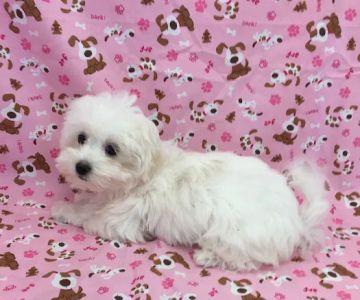- Why-the-Right-Collar-Matters-in-Puppy-Training
- Types-of-Collars-for-Training-Puppies
- Key-Features-to-Consider-When-Choosing-a-Collar
- Real-Life-Experience-and-Training-Tips
- Where-to-Find-the-Best-Training-Collars-and-Support
Why the Right Collar Matters in Puppy Training
Training a puppy is one of the most rewarding yet challenging parts of dog ownership. The right tools can make a significant difference, and selecting the best dog collars for training puppies is often overlooked but crucial. A collar is not just a place to attach a leash—it’s a training aid that helps establish communication and control without causing discomfort or harm.
Using an inappropriate collar can hinder your puppy’s progress, cause physical or emotional distress, and even damage the bond you’re working hard to build. Puppies have delicate necks and sensitive skin, so understanding why the right collar matters is the first step toward effective training.
In essence, the best collars for puppies combine comfort, safety, and functionality, tailored to the unique needs of young dogs who are just learning the rules.
How Collars Influence Behavior and Learning
Collars help signal to your puppy what behaviors are expected during walks and at home. For example, some collars gently discourage pulling or jumping, helping to teach impulse control. The collar you choose directly affects how your puppy perceives training and can make the experience positive and motivating or stressful and confusing.
Types of Collars for Training Puppies
When searching for the best dog collars for training puppies, it’s important to understand the options available and their intended uses. Here’s a detailed look at popular types:
1. Flat Buckle Collars
Flat buckle collars are the most common and usually the safest choice for puppies. They come in various materials such as nylon, leather, or fabric and are adjustable for growing pups. These collars are excellent for attaching ID tags and leashes during walks but offer limited training correction beyond gentle control.
2. Martingale Collars
Martingale collars are designed to prevent slipping out without choking. They tighten slightly when the puppy pulls but won’t constrict dangerously. This feature makes them ideal for puppies with narrower heads or breeds prone to backing out of collars. Martingales strike a balance between control and comfort, making them a favorite among trainers.
3. Head Collars
Head collars fit around the muzzle and behind the ears, allowing more direct control over the puppy’s head movements. These collars are effective for reducing pulling but require careful introduction and positive reinforcement to avoid causing fear or resistance. They are better suited for slightly older puppies who can understand the training cues.
4. Harnesses
Though not technically collars, harnesses are an important alternative for puppy training. They distribute pressure over the chest and shoulders rather than the neck, which is safer for very young or small-breed puppies. Some harnesses come with front-clip attachments to discourage pulling effectively.
Key Features to Consider When Choosing a Collar
Selecting the best dog collars for training puppies involves more than just picking a cute design. The following features make all the difference in comfort, durability, and training success:
Adjustability and Fit
A collar must fit snugly but not too tightly. Puppies grow fast, so adjustable collars are preferable to accommodate their changing size. You should be able to fit two fingers comfortably under the collar to ensure it isn’t choking or too loose.
Material and Durability
Puppies tend to chew and play rough, so collars made from durable materials like nylon or leather are ideal. At the same time, the material should be soft enough to prevent irritation, especially for puppies with sensitive skin.
Safety Features
Reflective stitching or bright colors can increase visibility during evening walks. Quick-release buckles provide an emergency safety option if the collar gets caught on something.
Training Functionality
Consider collars with gentle correction capabilities such as martingale tightening or compatibility with positive reinforcement methods. Avoid collars that cause pain or fear, which can backfire during training.
Real-Life Experience and Training Tips
Emily, a new puppy owner, shared her journey with her energetic Border Collie puppy, Scout. Initially, Emily used a standard flat collar but struggled with Scout’s strong pulling on walks. After consulting Hidden Brook Veterinary, she switched to a martingale collar recommended by their trainers.
The difference was remarkable—Scout learned to walk calmly without choking or discomfort. Emily also credits the advice on positive reinforcement techniques combined with the right collar as the key to their success.
This story highlights how combining the best dog collars for training puppies with patient, consistent training can lead to well-mannered dogs and stronger human-canine bonds.
Additional Tips for Successful Training
1. Introduce the collar gradually to make your puppy comfortable wearing it. Use treats and praise during initial fittings.
2. Combine collar use with reward-based training methods to reinforce good behavior.
3. Regularly check the fit and condition of the collar as your puppy grows.
4. Consult with veterinary professionals or trainers for personalized recommendations tailored to your puppy’s breed and temperament.
Where to Find the Best Training Collars and Support
Choosing the best dog collars for training puppies is a personal and sometimes trial-and-error process. For quality products and expert advice, visit Hidden Brook Veterinary. Their knowledgeable staff can guide you in selecting the ideal collar and provide additional training support to ensure your puppy’s success.
Whether you need specialized collars, harnesses, or comprehensive puppy training services, Hidden Brook Veterinary is a trusted resource that blends professional care with compassionate understanding.












